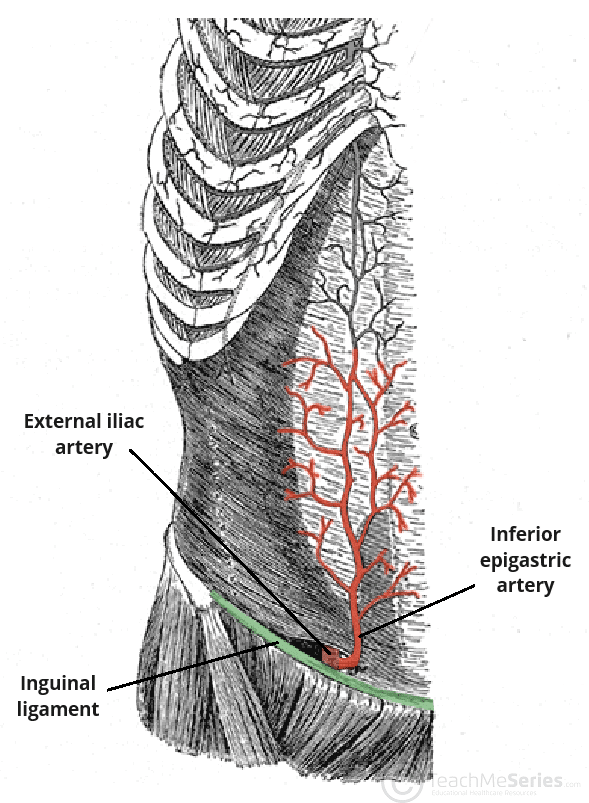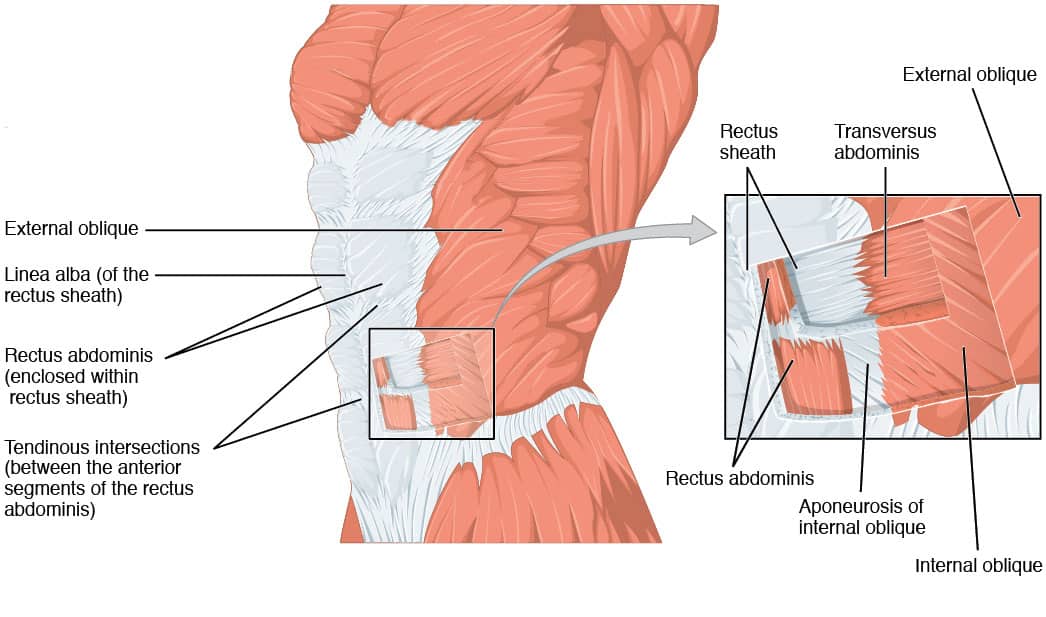The inferior epigastric artery is an artery of the anterior abdominal wall. It arises from the external iliac artery.
It contributes to the blood supply of the muscles, subcutaneous tissue and skin of the anterior abdominal wall.
Course
The inferior epigastric artery arises from the external iliac artery, immediately superior to the inguinal ligament.
After its origin, the inferior epigastric artery travels superiorly in an oblique path, passing the medial border of the deep inguinal ring. It then pierces the transversalis fascia to travel within the rectus sheath, posterior to the rectus abdominis muscle.
It gives rise to several branches along its course, including the cremasteric artery, pubic branch and muscular branches.
At the level of the umbilicus, the inferior epigastric artery terminates by dividing into numerous branches which anastomose with the superior epigastric artery.
Note: As it passes the deep inguinal ring, the inferior epigastric artery forms the lateral border of Hesselbach’s triangle – the anatomical landmark for the site of direct inguinal hernia formation.

Fig 1 – The origin of the inferior epigastric artery from the external iliac artery, immediately superior to the inguinal ligament.

Fig 2 – Course of the inferior epigastric artery after its origin from the external iliac artery.
Supply
The inferior epigastric artery gives rise to the following branches:
- Muscular branches – supply the parietal peritoneum, muscles of the anterior abdominal wall, subcutaneous tissue and skin.
- Cremasteric artery – supplies the cremaster muscle and spermatic cord.
- Public branch – supplies the pubic bones and pubic symphysis.
